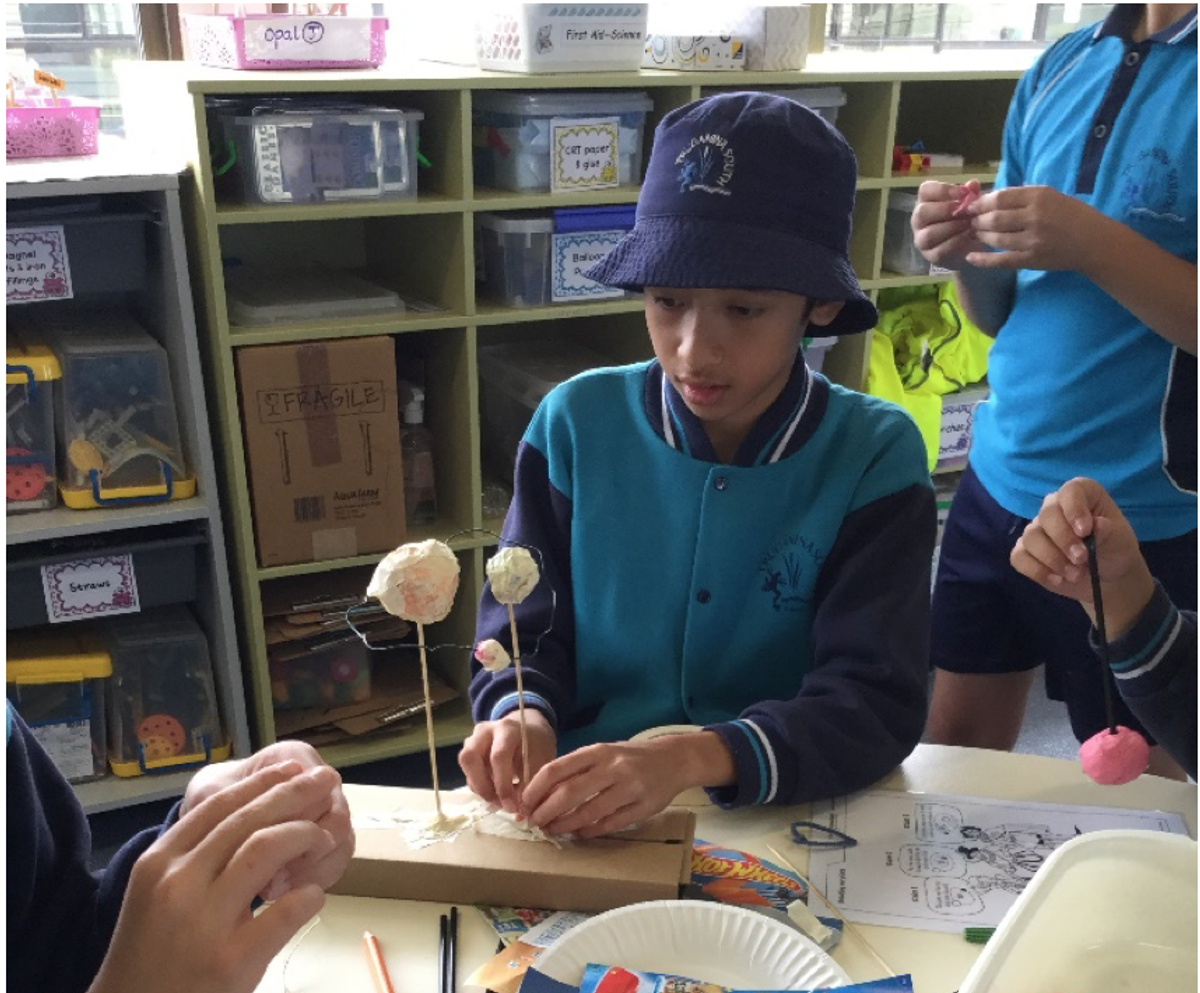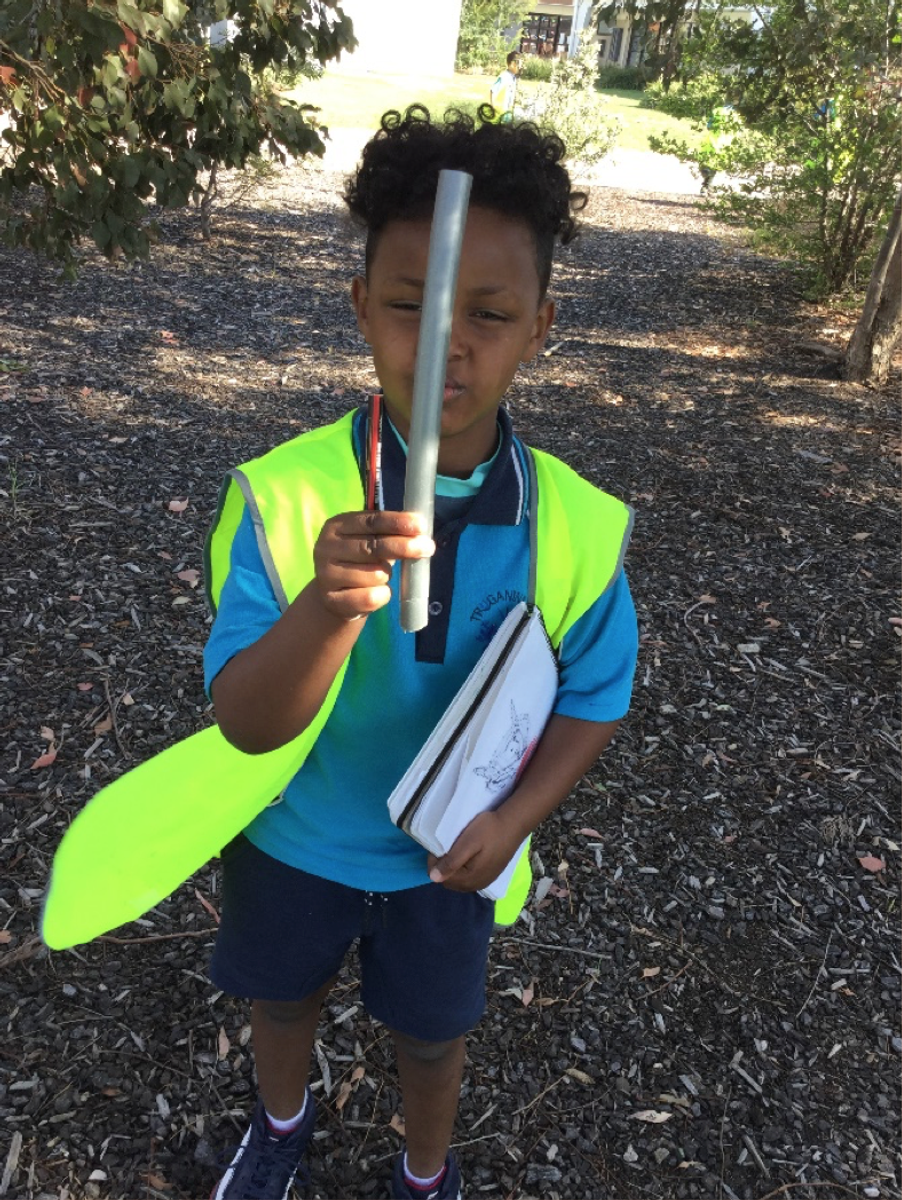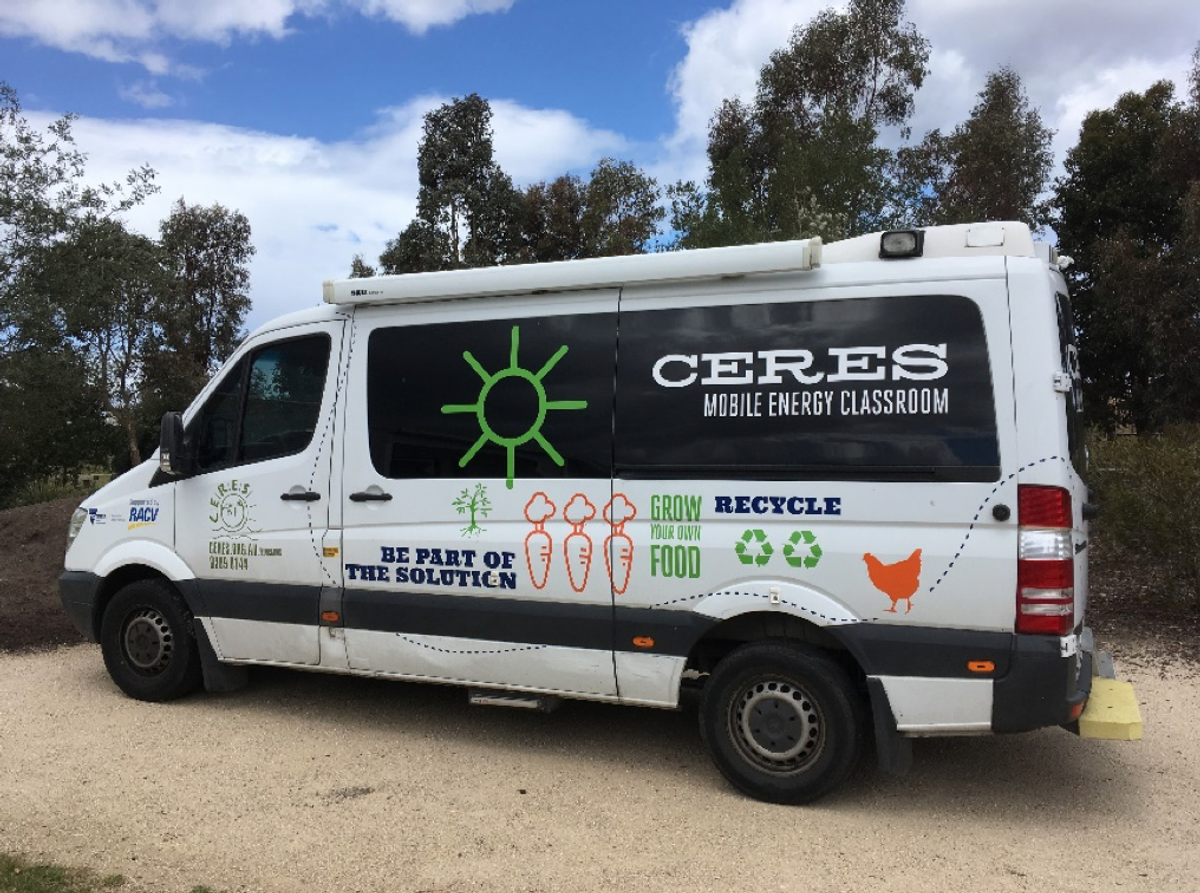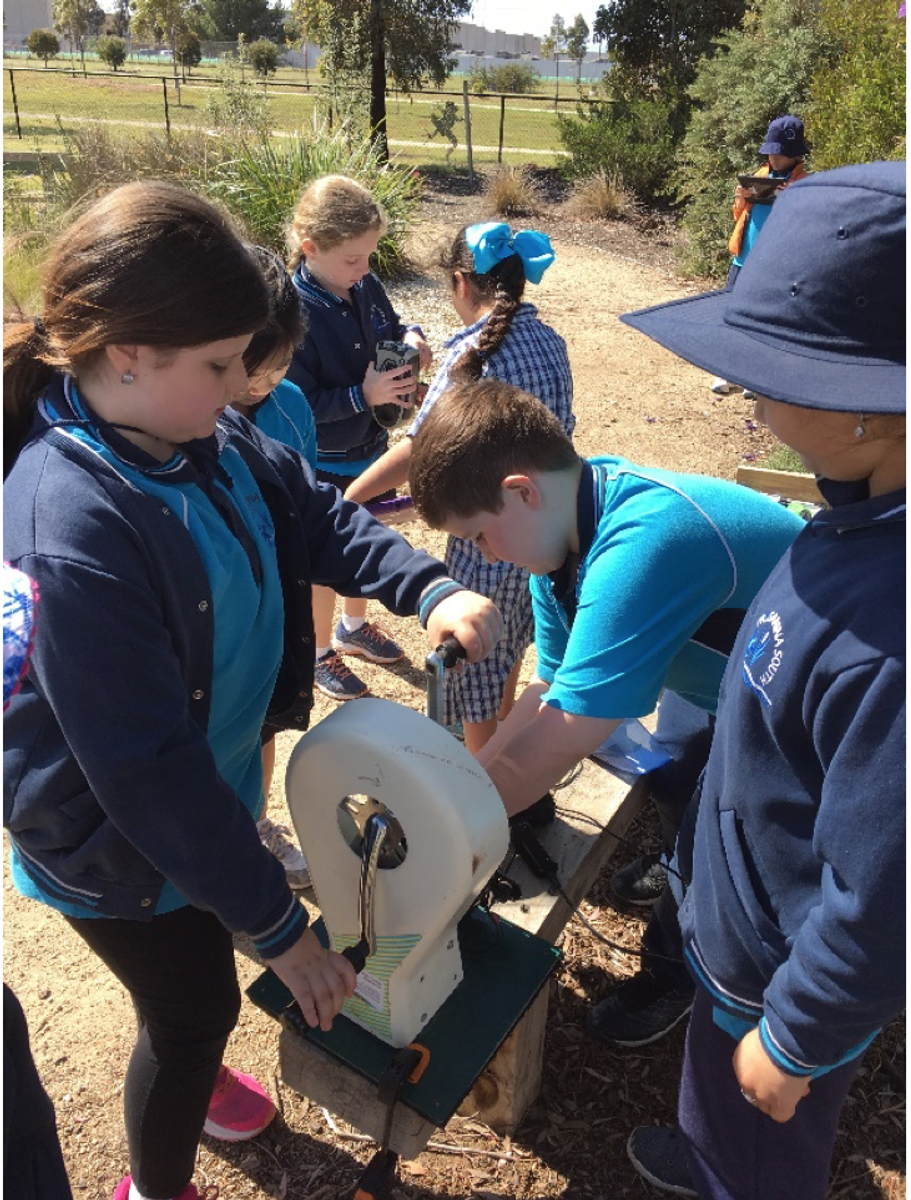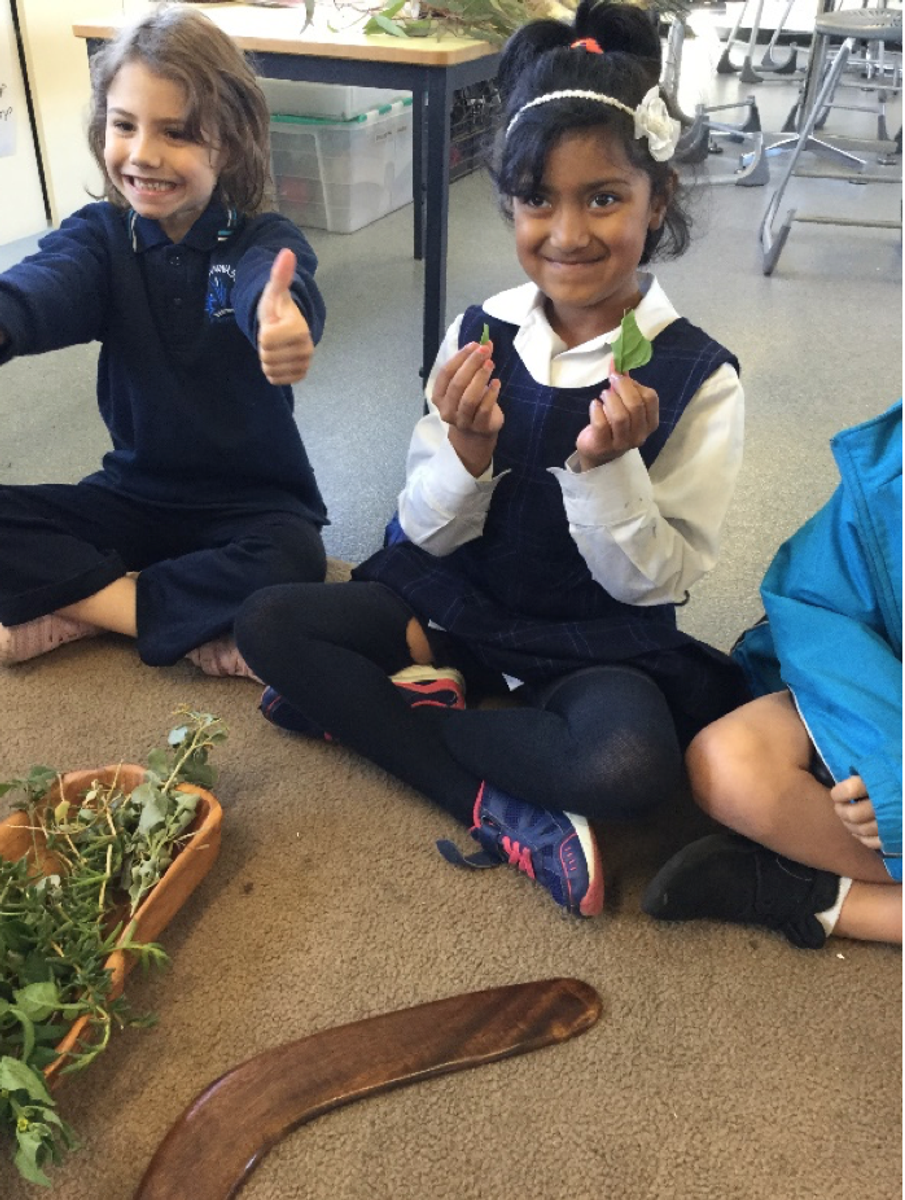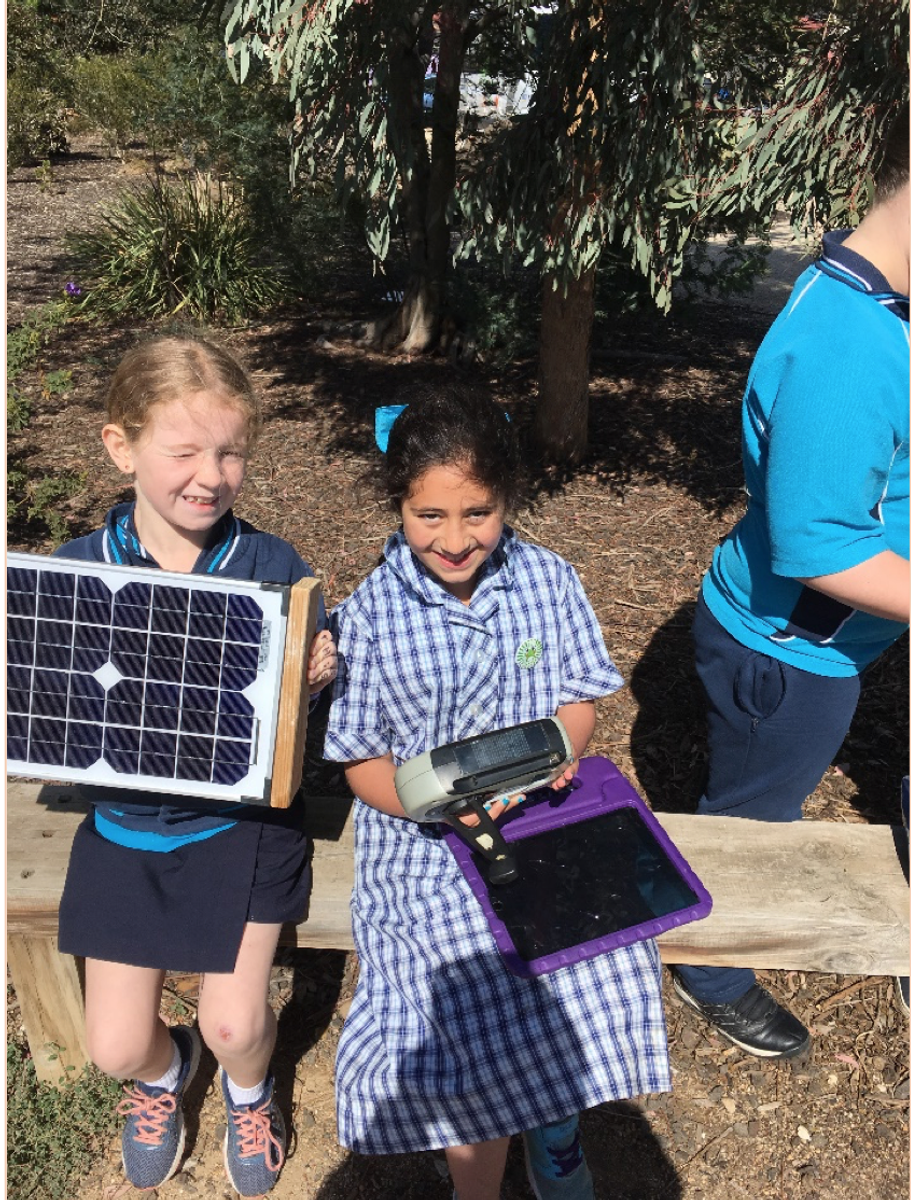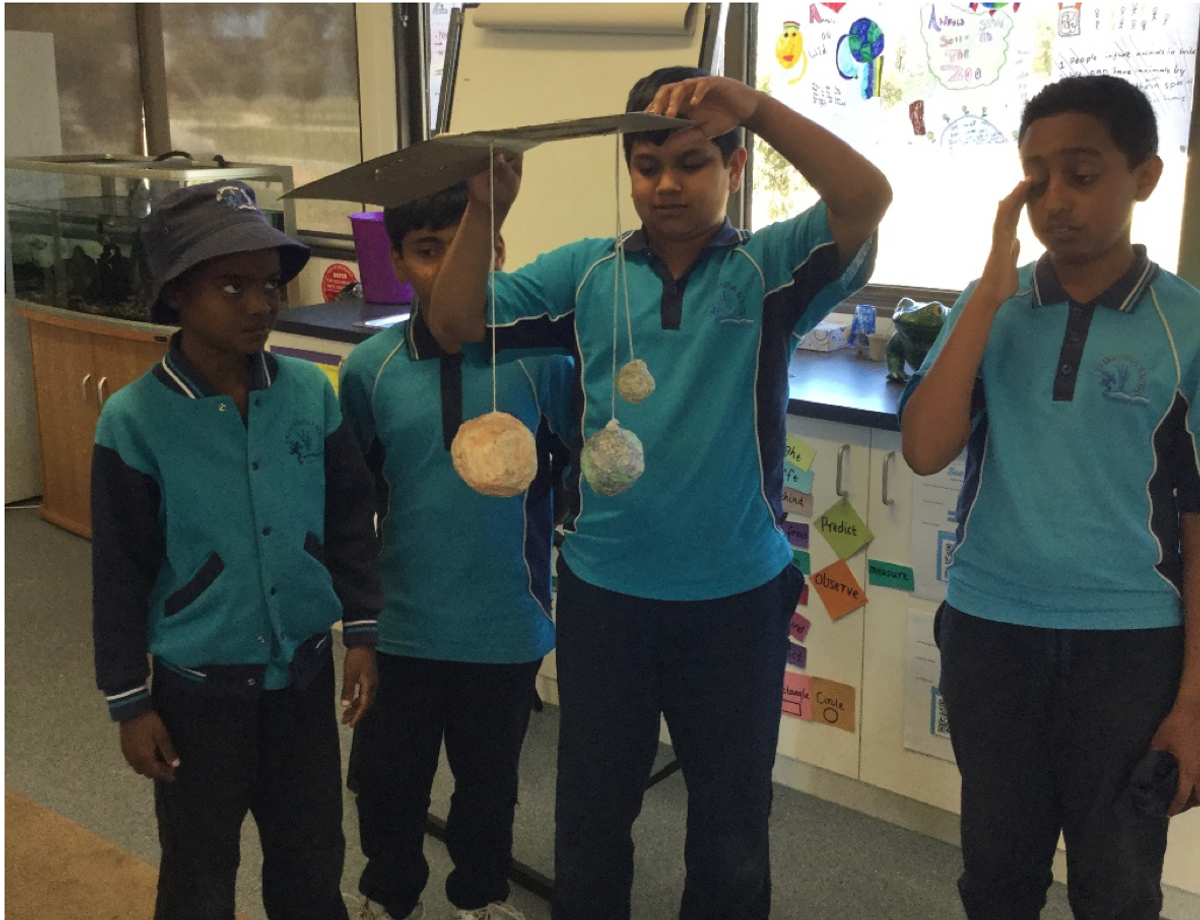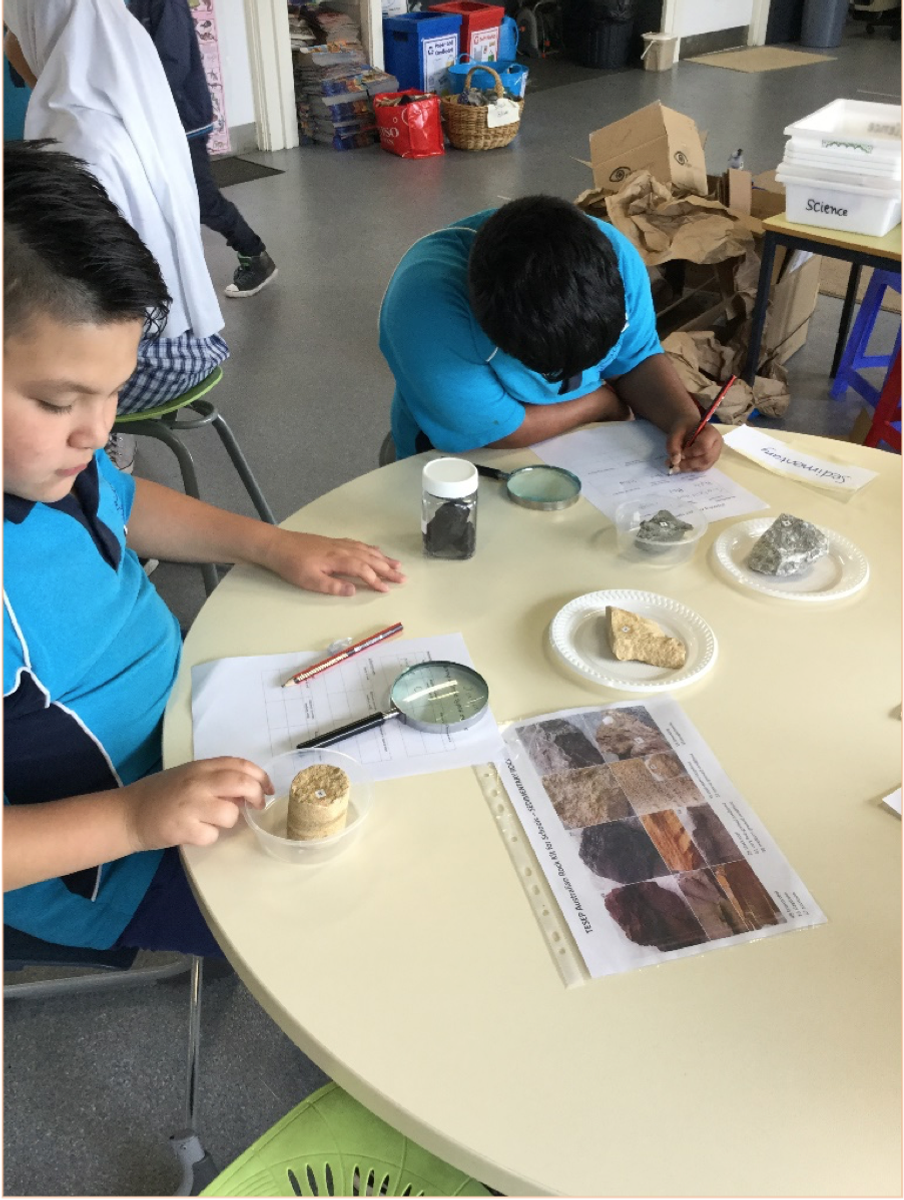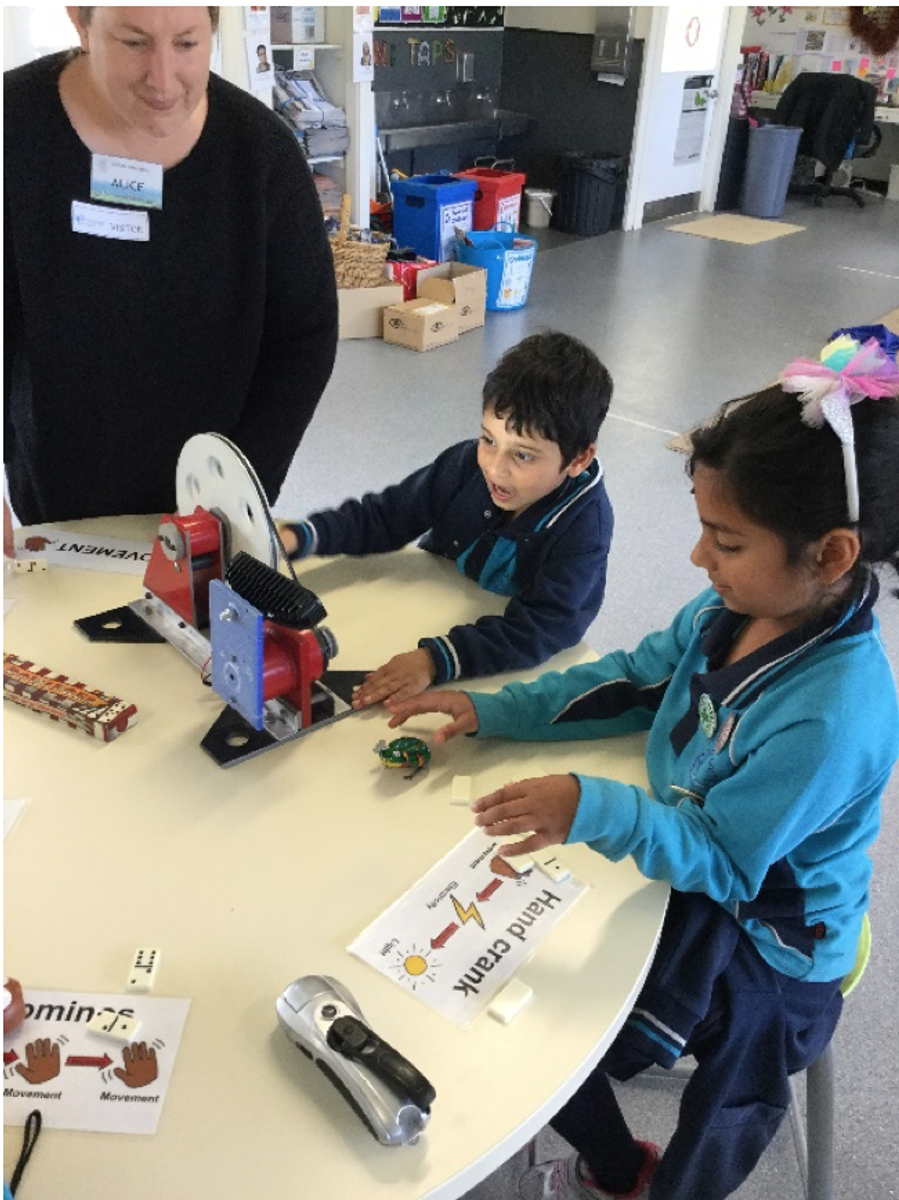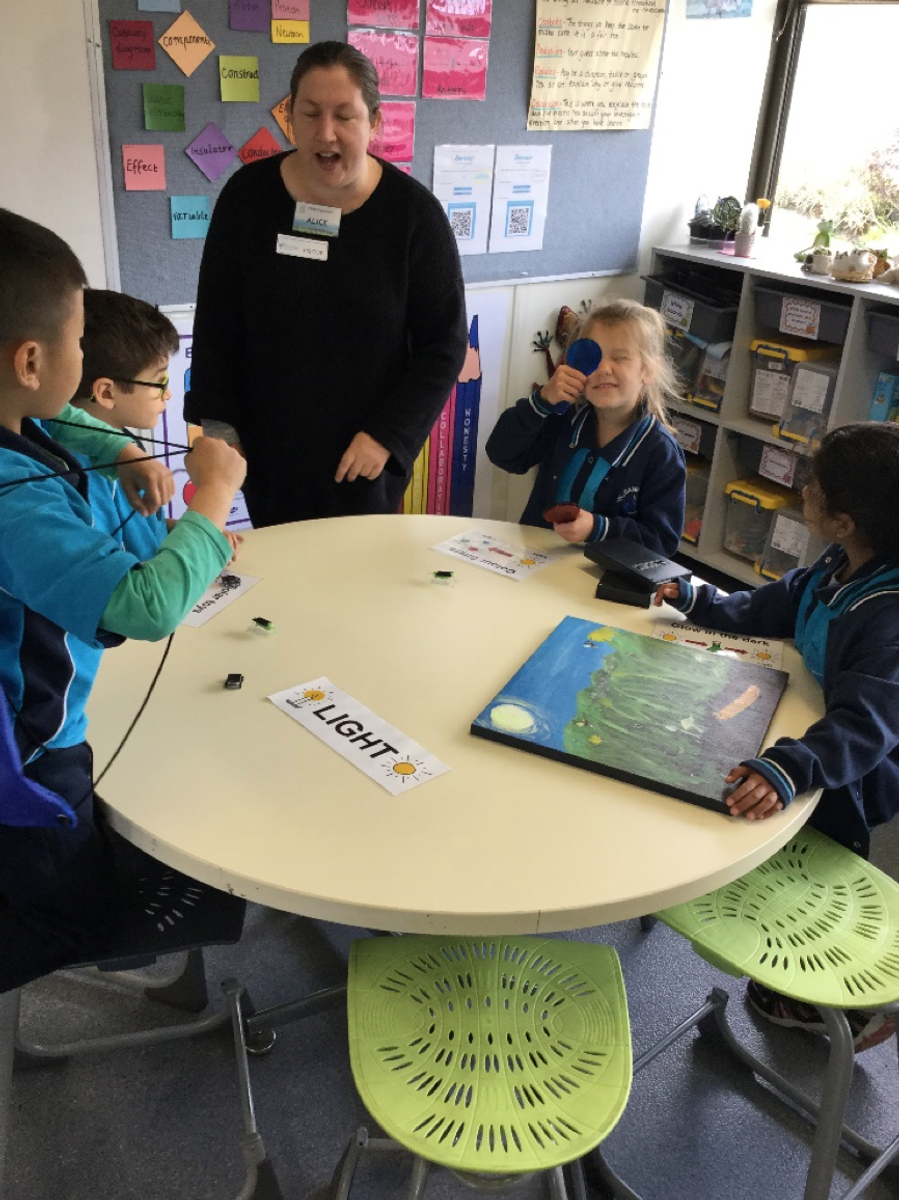Science

The warmer weather in Term 4 has allowed six of our one hundred spiny leaf insect eggs to hatch. These new babies are in the nymph stage of their life cycle which is characterised by a small black body and legs with a brown head, a length of about 2cm and they look very similar to ants. This is a great protective mechanism as most animals don’t like eating ants. The nymph’s long legs and fast movements give it a spider-like appearance when walking but the students aren’t worried about this, they just love watching these babies crawl on their hands and arms. Our enclosure also houses two female adults that are consistently laying eggs, which are clones of themselves (a type of reproduction method called parthenogenesis). The adults are 10cm long and curl their tail to look like scorpions. And lastly we have four spiny leaf insects in the middle of their lifecycle that measure in at 5cm long.
The prep’s have been learning about changes in weather and how different countries experience different weather. They have developed skills in creating and identifying symbols and carrying out investigations to test their ideas. They also took part in an incursion held by CERES Environmental Park where they learnt about different types of energy such as heat, light, sound and electricity.
The grade 1/2 topic this term was “Changes in the Earth’s environment, landscape and sky.” They have observed and described the changes in the sun, moon, clouds and plants. The students are looking forward to taking home the seedling they have been growing. CERES Environmental Park presented a lesson to the grade 1/2 students about the health of rivers and indigenous bush food, further developing their understanding of sustainability.
The grade 3/4’s have been studying the Earth beneath us. They have examined different rock types with microscopes and identified various features that make them unique. They have learnt about the rock cycle to contextualise the different rock features and discover how each rock type is made – sedimentary, metamorphic and igneous rocks. They also participated in an incursion held by CERES Environmental Park where they learnt about sustainable energy and got to use solar panels to power a tap outside.
Earth’s place in space has been the focus of the grade 5/6 Science unit. They started by learning about early theories and the evidence that was needed to prove or disprove them. The students then built a moving model of the Earth, Moon and Sun to demonstrate their belief about how they move or orbit. By presenting their models to the class and observing their peers’ models, students were able to debunk previously held ideas and strengthen their understanding of these phenomena.

